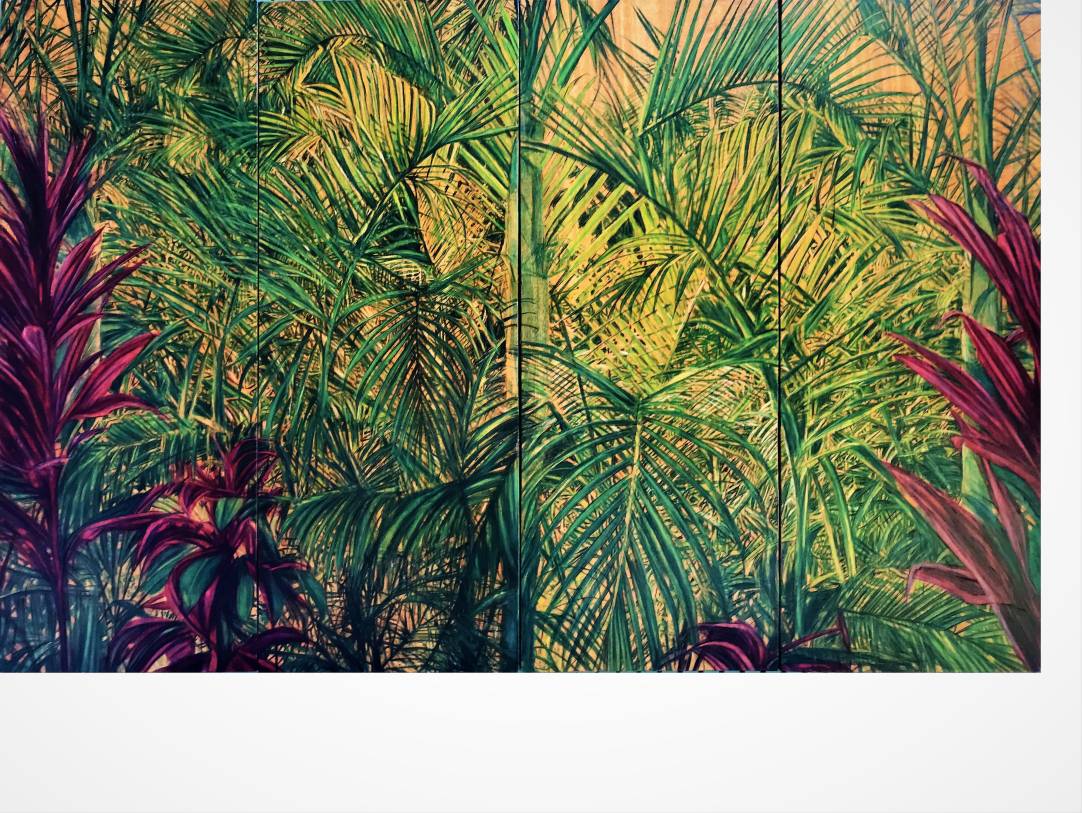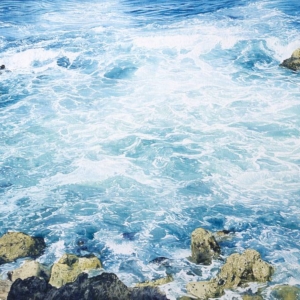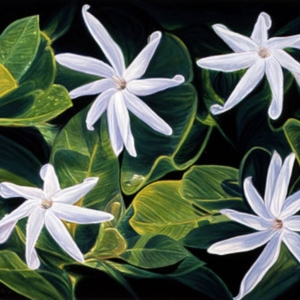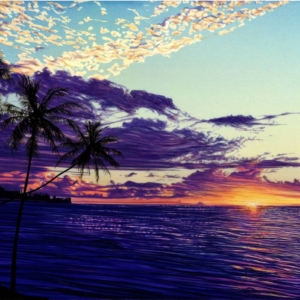The painting “Palms quartet” is inspired by the work of the French painter Henri Rousseau.
The painting was part of an exhibition organized in 2013, when this article was written. The exhibition featured works done by artists who had been influenced by Fauvism or Cubism. These are styles that arose in France during a short period around the turn of the century, around 1906.
The points I wanted to focus on in this painting were the strength and beauty of color and simplification. The simplified shapes, especially those found in Henri Rousseau’s paintings (for example “the dream”), features curves and gentle waves like those found in calligraphy.
| Type of Medium | |
|---|---|
| Size of Painting |
Related Products
-
Ikebana #7
The white paper used in this drawing reminds me of the cleanliness and purity of snow, which brings back memories of when I was a child. As much as I love Ikebana in traditional Japan, I also like Ikebana in Europe or other parts of the world that have a different taste. The beauty of flowers does not depend on…
-
Keahou surf
It’s not even particularly known as a good spot, and yet it still draws an unbelievable amount of people. Since I had free time, I decided to come and see for myself, but… As expected, just like with the previous sport, there were some pretty amazing guys here. To think that there would be more than ten people out here…
-
Hawaiian wedding flower
HAWAIIAN WEDDING FLOWER DIGITAL PRINT Depicted in the art are Hawaiian wedding flowers, which can be seen in abundance at many island weddings. The flowers are displayed in a vase, which is usually placed on an altar-like table to display the floral arrangement. The Hawaiian wedding flower is an extremely important part of traditional Hawaiian ceremonies and celebrations. The tradition…
-
Diamond point
This piece of art was inspired by the Boro (Japanese peasant handcraft) technique called Diamond point. It was conceived during the early 20th century and it is made from a single strand of iron wire. The palms on the beach or in the snow create a color gradient which can be reproduced using this technique. Although it sounds easy to…






